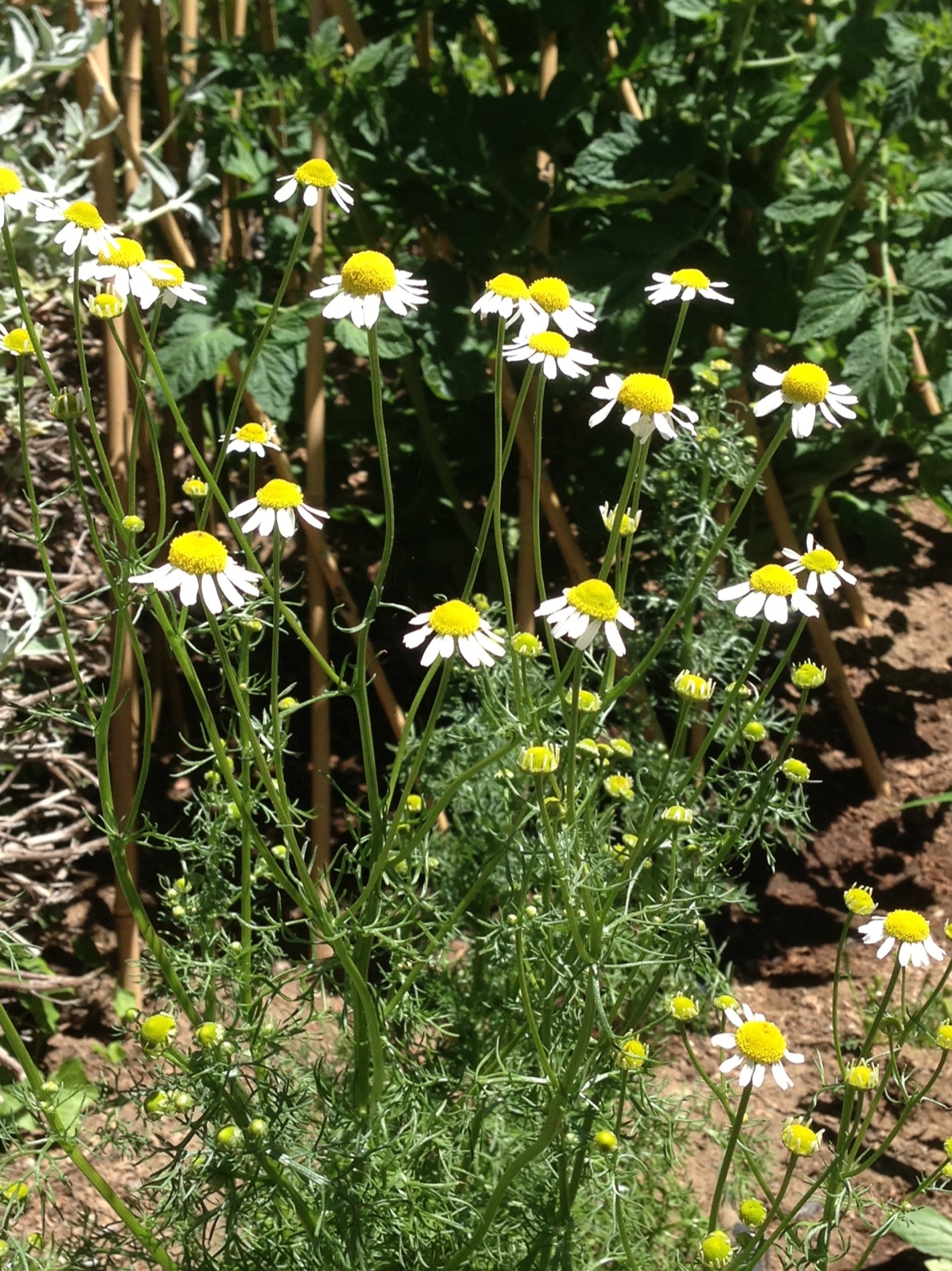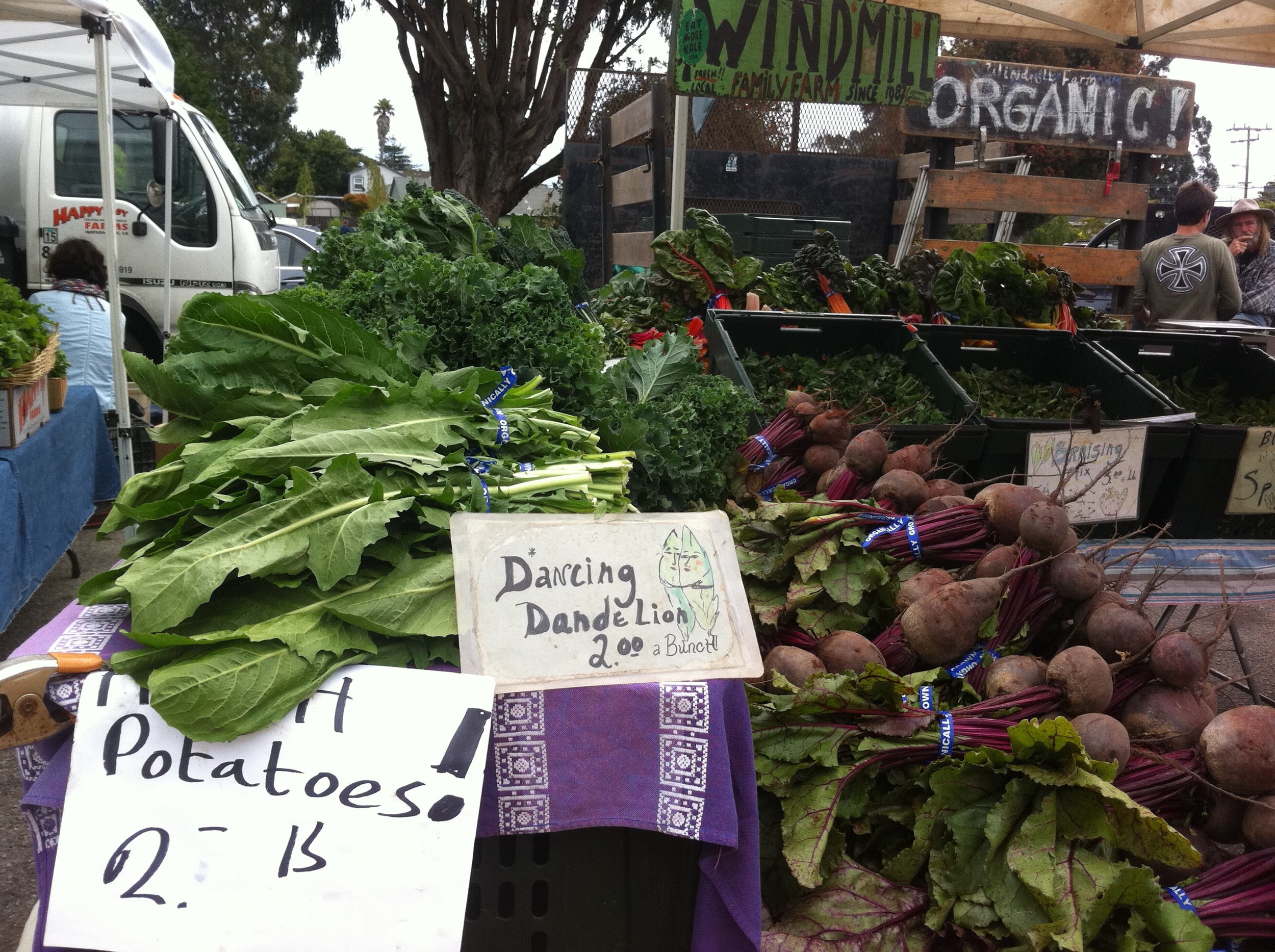I've grown German Chamomile (Matricaria recutita) for the first time this year and it's a real delight to see the bright daisy-like flowers nodding above the strawberries in my new vegetable patch.
Chamomile is one of those herbs which I think gets kind of overlooked, perhaps because it's just too darn ubiquitous. It's the herbal tea bag you'll find in cafes or smarter hotels. Everyone has heard of it and everyone knows what it's for: it helps you relax and sleep, doesn't it?
Well, yes it does, but there's more to this herb than just a bedtime cuppa. With its slight bitterness and high essential oil content, Chamomile is a fine 'carminative' or soothing digestive herb to reduce gas and bloating when you've overindulged or eaten the wrong of foods. It's also a great quick fix for tension headaches - make a very strong cup of chamomile tea using at least three tea bags or a tablespoon of dried herb to a cup of boiling water. Steep it for at least ten minutes and drink. You'll be surprised at how effective it is.
My teacher used to say that Chamomile is for 'babies of all ages'. It is safe and gentle enough to be used on even tiny ones, I used to make a strong tea of chamomile and lavender to add to my son's bath water when he was little. I'm not a fan of baby washes, which I think are often too harsh and can even make eczema more likely. Babies are fundamentally pretty clean and the herbs have a gentle anti-microbial action which is helpful round the nappy/diaper area. And and since babies are remarkably porous, the calming and soothing essential oils are absorbed to help reduce colic and soothe and calm the baby. That Latin name, Matricaria translates as 'from the mother' and chamomile is a great herb to use whenever someone needs a little gentle mothering.
If you ever come across the essential oil of German Chamomile, you'll discover that it's a/ really expensive and b/ a deep, dark greenish blue. This is thanks to chamazulene, a constituent in the essential oil which is a superb anti-inflammatory. Like other essential oils, it should only be used externally and should always be diluted before you use it on your skin - chamomile may be gentle, but the essential oil is powerful stuff. A few drops added to a cream or salve will turn it a delightful blue and really help reduce redness and inflammation in skin conditions such as eczema, nettle rash and prickly heat.
Incidentally, this is one of those herbs I think you'll need to plant or buy dried - I don't think I've ever come across it in the wild (though I may just be looking in the wrong places - let me know if you've found some). It's lower growing cousin, pineapple weed with it's petal-less yellow cone flowers and it's pungent fruity, pineappleish scent is found along paths and dry meadows all summer long and is often confused with true chamomile. There are lots of daisy-ish looking plants out there and it can be hard to tell one from another. Look out for the way the white petals curve back away from the dense, cone-like yellow centre and the flowers and feathery green foliage have that distinctive sweet, apple-y, summery scent when lightly crushed.


